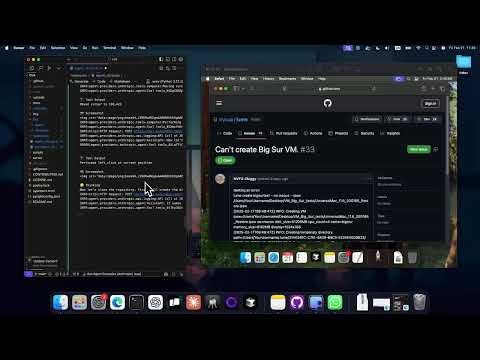
Table of Contents
Overview
In the ever-evolving landscape of AI, the ability for agents to interact with and control operating systems is becoming increasingly crucial. Enter Cua, an open-source framework designed to empower AI agents to control full operating systems within high-performance, lightweight virtual containers, specifically on Apple Silicon. This innovative tool promises a new level of automation and control, but how does it stack up? Let’s dive in and explore its features, functionalities, and potential drawbacks.
Key Features
Cua boasts a powerful set of features designed for seamless AI agent operation within virtualized environments:
- Lume Virtualization Layer: Provides a lightweight and efficient virtualization environment for macOS and Linux operating systems, optimized for Apple Silicon.
- Computer-Use Interface (CUI): Allows AI agents to interact with the OS through programmatic control, enabling actions like clicking, typing, and navigating applications.
- Computer-Use Agent (CUA) Framework: Facilitates the creation and management of agentic workflows, allowing agents to perform complex tasks across multiple applications within the virtual machine.
- Near-Native Performance on Apple Silicon: Leverages the power of Apple Silicon to deliver performance comparable to running applications directly on the host OS.
- Support for macOS and Linux VMs: Offers flexibility by supporting both macOS and Linux virtual machines, catering to a wide range of development and testing needs.
How It Works
Cua’s functionality revolves around a layered approach. First, users install Lume, which acts as the foundation for managing macOS or Linux virtual machines. These VMs run in secure, isolated containers, ensuring the host system remains unaffected. The magic happens with the Computer-Use Interface (CUI), which grants AI agents the ability to interact with the OS within the VM. Agents can perform actions like clicking buttons, typing text, and navigating menus, all programmatically. Finally, the CUA framework provides the structure for building complex agentic workflows that can seamlessly operate across different applications within the VM. This allows for sophisticated automation scenarios.
Use Cases
Cua opens doors to a variety of compelling use cases:
- Automating Desktop Applications: Automate repetitive tasks within desktop applications, such as data entry, report generation, or software testing.
- Running AI Agents in Isolated Environments: Execute AI agents in a secure and isolated environment, preventing potential harm to the host system.
- Testing Software in Virtualized OS: Test software in a virtualized environment that mirrors different operating systems and configurations, ensuring compatibility and stability.
- Securely Executing Workflows Without Affecting the Host System: Execute sensitive or potentially risky workflows in a secure container, preventing any impact on the host operating system.
Pros & Cons
Like any tool, Cua has its strengths and weaknesses. Let’s take a look:
Advantages
- High Performance: Leverages Apple Silicon for near-native performance within virtualized environments.
- Secure Isolation: Provides a secure and isolated environment for running AI agents and workflows.
- Open-Source and Customizable: Offers the flexibility to customize and extend the framework to meet specific needs.
Disadvantages
- Requires Apple Silicon: Limited to Apple Silicon-based Macs, restricting its use on other platforms.
- Limited to macOS 15 or Newer: Requires macOS 15 or newer, potentially excluding users with older systems.
- May Have a Learning Curve for Setup: Setting up and configuring the environment may require some technical expertise.
How Does It Compare?
When considering alternatives, it’s important to understand the trade-offs. UTM offers virtualization capabilities, but often falls short in performance compared to Cua’s optimized Apple Silicon implementation. Docker Desktop provides containerization, but lacks the ability for AI agents to fully interact with the operating system in the same way Cua’s CUI allows. Cua strikes a unique balance between performance, control, and isolation.
Final Thoughts
Cua presents a compelling solution for developers and researchers looking to leverage AI agents for operating system control on Apple Silicon. Its high performance, secure isolation, and open-source nature make it a powerful tool for automation, testing, and secure workflow execution. While the Apple Silicon requirement and potential learning curve may be drawbacks for some, the benefits of Cua are undeniable for those within its target ecosystem. It’s a framework to watch as AI-driven automation continues to evolve.

